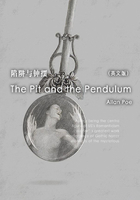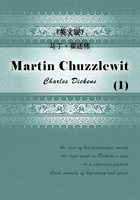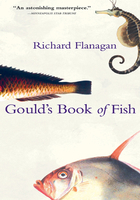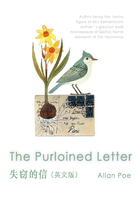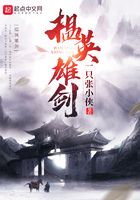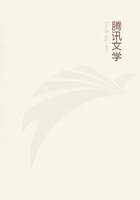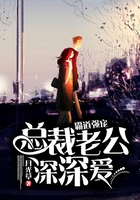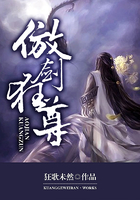Myron I. Lichtblau
Mario Vargas Llosa belongs to that select group of highly gifted writers of the so-called boom generation that catapulted Latin American fiction to the forefront of world literature. Along with Jorge Luis Borges, Gabriel García Márquez, and Carlos Fuentes, the Peruvian novelist disengaged fiction writing in Latin America from its regionalism and sociological orientation and made it a vehicle for the expression of more universal, human values within the context of the American experience. Born in 1936, Vargas Llosa has had a remarkable career as journalist, politician, essayist, dramatist, short story writer, and most importantly, as a serious, committed novelist whose works have been enthusiastically acclaimed by both professional critics and the general reading public.
Few writers are as candid about their work as Vargas Llosa; even fewer are as perceptive. His directness and candor concerning those elements of his life that bear significantly on his novels illuminate his literary personality and reveal his abiding concerns about fiction writing in general and his own art in particular. In his writings and public lectures, such as those comprising this volume, Vargas Llosa is not only articulate and insightful about the complicated process of novelistic creation that obtains when he sets out to write a work of fiction but is extremely conscious as well of the genesis of each work, the source of inspiration, and the myriad environmental and psychological forces that play on his mind and emotions as that process is evolving.
The essence of Vargas Llosa's art is personal experience turned fiction. It is for this reason that he speaks so constantly about people, books, and events in his life, for they form the wellspring of many of his best fictional works. The conversion of what Vargas Llosa calls real reality to a fictional reality is as complete and convincing as the mimetic reproduction of external reality in the hands of more traditional writers of past generations. But it is far more artistic and aesthetically pleasing. Whether in The Time of the Hero, The Green House, or Aunt Julia and the Scriptwriter, the transmutation of experiential reality to fiction is accomplished through the novelist's imaginative manipulation of time sequences, spatial correspondences, narrative structures, and even ontological systems.
It is thus not so much the transformation of reality that the reader senses as the remaking of the order and the position in which common elements of human experience occur and coalesce. The recording of simultaneous but different actions in the same narrative space, the concept of the vasos comunicantes, in which two dialogues spatially and temporally independent are interwoven into one, the running together of thought processes in the form of interior monologues and stream of consciousness, and the fragmenting or refracting of everyday occurrences — these are some of the techniques that change one level of reality into another, that help create one reality out of another, that invent a new reality and invite the reader to be part of it.
Vargas Llosa's genius showed itself early, in his first novel, published in 1962 when he was twenty-six years old. A seemingly autobiographical work about the novelist's adolescent years in the Leoncio Prado Military Academy, The Time of the Hero amazed most critics because of its mastery of novelistic technique and its sensitive treatment of difficult thematic material. Essentially a Bildungsroman, the novel is the cadets' collective initiation into life, but is at the same time a microcosm of Peruvian society in its variegated and perniciously differentiated strata. The violence, deception, and duplicity that prevail at the academy at all levels within its walls reflect the sham, hypocrisy, and injustices of the outside world and suggest that all attempts to remedy these ills will meet with the fierce resistance of established order and imbedded systems of conduct and control. In their symbolic representation, the actions of the cadets and military officials paint an abject picture of Peruvian life, in which the strict codes of behavior of the various social classes — the military, the bourgeoisie, the middle class — are challenged as being outmoded and incompatible with the needs and aspirations of a changing society.
In The Green House (1966), Vargas Llosa's second and perhaps most celebrated novel, the two settings of Piura, a coastal, desert city in the extreme north, and Santa María de Nieva, a tiny trading post in the Amazon region, represent the division of Peru into two separate and distinct cultures. Structurally, the novel is Vargas Llosa's most complex and labyrinthine, as five independent stories are narrated in rotation within each of the four principal sections of the work and the epilogue. The rupture of chronological time, the fragmentation of the thought processes of the characters, and the fortuitous confluence of episodes and lives, all contribute to the kaleidoscopic image of an almost mythical and transcendental reality. With an inordinate control of this vast canvas of narrative material, Vargas Llosa weaves the five stories of frustration and ultimate defeat in environments as inexorable as they are hostile: Fushía, the Japanese-Peruvian truculent smuggler who ends his days in a leper colony; the mysterious Anselmo who builds the first brothel on the outskirts of Piura, seduces the blind and mute Anto?ita and forces her to live in the same "green house," and then works as a musician in the second bordello built on the ashes of the first by his natural daughter Chunga; the mission of the nuns of Santa María de Nieva to "civilize" and educate the Aguaruna Indian girls, among them Bonifacia; Jum, an Aguaruna chief who is horribly tortured because he opposes the exploitation of his people by the avaricious patrones; and finally the "Invincibles," a rowdy gang of young toughs from the slums of La Mangachería. The "green house" itself touches the lives of several important characters in the novel and for some critics represents a powerful symbol of the Spanish conquest and colonial rule, of the destruction of flourishing Indian civilizations, and the degradation of their inhabitants. In Vargas Llosa's essay on the early chronicle, the novelist cogently synthesizes the fundamental nature of Peruvian civilization, words which may well apply to one of the basic themes of The Green House: "Two cultures, one Western and modern, the other aboriginal and archaic, badly coexist, separated from each other because of the exploitation and discrimination that the former exercises over the latter."
In his next novel, Conversation in The Cathedral (1969), Vargas Llosa portrays the social and political atmosphere in Peru during the regime of Manuel Odría, 1948–56, a corrupt dictatorship that the novelist lived through as a university student in Lima. Again, violence, sham, chicanery, and fear are the central motifs in this disturbing novel set principally in Lima but with many episodes situated in other regions of the country, from the coastal sections to the Andes. "The Cathedral" is a cafe and bar in the capital, a popular gathering place to talk, discuss, and recollect. The dialogue between the journalist Santiago Zavala and his father's ex-chauffeur Ambrosio Pardo is just the frame, or point of reference, for the more important dialogues that form the interpolated portions of the novel. These dialogues are evoked by the reminiscences of the two characters and involve people and events of the reconstructed past during Odría's term of office. As both men conjure up episodes of fraud and corruption to which their own fathers were witnesses, the sordid picture of Peruvian life is revealed in ironical historical perspective.
Until 1972, when Captain Pantoja and the Special Service was published, humor was noticeably absent in Vargas Llosa's novels. For a long time he persisted in the belief that humor and fiction were incompatible. He distrusted humor as an instrument for portraying reality and originally set out to write Captain Pantoja and the Special Service in the completely serious vein that had characterized his three previous novels. But Vargas Llosa soon realized not only that the story itself, turning on Captain Pantoja's overly zealous efforts to organize a service that would supply prostitutes to a military garrison in the Amazon, could be told much more effectively if narrated in a comic way but that humor was absolutely necessary for the work to be convincing. Yet underneath the comedic portrayal of Pantoja's dedication and in dustry, with military officialdom, useless documentation, and red tape standing in ironic contrast to the nature of the assignment, is the impelling picture of bureaucratic efficiency gone wild, of institutionalized assiduousness that warps the mind and distorts reality, of overspecialization that causes men to sacrifice everything for the accomplishment of their tiny mission.
In Aunt Julia and the Scripwriter (1977), two independent stories are narrated in alternate chapters of the novel. Both stories issue from Vargas Llosa's life experiences and become fiction not so much because the novelist changed reality but because he superimposed a different reality on the observable reality, envisaged a new reality on the basis of the old. Aunt Julia and the Scriptwriter represents Vargas Llosa at his most ingenious and entertaining best. One story relates Varguitas's courtship and marriage to his Aunt Julia, an aunt by marriage, when he was just eighteen years old and she twelve years older. The other deals with a radio script writer, Pedro Camacho, who writes so many different scripts peopled with so many diverse characters that he has difficulty keeping them all straight and eventually winds up inserting all sorts of inaccuracies and contradictions in the tales to the amazement and annoyance of his radio audience. Aunt Julia and the Scriptwriter is a novel about writing, about the act of writing, of writing within writing, as Varguitas is portrayed as a student employed part time at a radio station putting together the news, while his companion at work is Pedro Camacho, who becomes so enmeshed in his own creations that at one point he even dons a disguise for one of his characters. The juxtaposition of these two concurrent narrations — one, the melodramatic soap operas themselves and Camacho's bizarre personality; the other, the equally melodramatic story of Varguitas's youthful romance — produces a fascinating contrapuntal narrative design that is as entertaining as it is pregnant with deep psychological import.
Reality transformed into fiction occurs too in The War of the End of the World (1984) and The Real Life of Alejandro Mayta (1986), but it is transformation of a different kind of reality, a historical reality in which Vargas Llosa has participated not directly or experientially, but intellectually and emotionally through the power of his own readings. With the irony of historical retrospect, The War of the End of the World narrates the rebellion of 1896 against the Republic of Brazil, which had won its independence from Portugal just a few years before. The rebellion in the northeast province of Bahia was headed by Antonio Conselheiro and was finally put down after four bloody military expeditions. Just as Vargas Llosa sees Peru divided into two cultures, so too does he perceive this rebellion as a struggle between westernized, "civilized," Brazil, represented by the military forces and official authorities, and the "primitive" people of the hinterland. What is worse, the only contact between the two cultures is ironically a military encounter.
In The Real Life of Alejandro Mayta, the reader tries to reconstruct the past through participants and witnesses to that past, but what results is a blurred, ambiguous fiction within another fiction that recounts past events in accord with individual perspectives and interests. In this case, reality becomes fiction not only because the novelist fictionalized it but because the acts of remembering are so deformed or willfully mendacious that it is itself a fiction. The novel tries to assemble the fragmented pieces of the story of the unsuccessful rebellion in the Peruvian Andes in 1958, led by the leftist Alejandro Mayta. The nature of Vargas Llosa's fictional representation of the insurrection is clearly indicated in the Spanish title Historia de Alejandro Mayta because the word historia means both history and story, but the English translation of history fails to suggest the ironical interplay of truth and nontruth so important to the novel's development.
The versatility of Vargas Llosa's fiction is matched only by its unpredictability. We never quite know what to expect next from the novelist's pen, a point reinforced by the newest of his books, In Praise of the Stepmother, billed by his publisher as "an erotic masterpiece," which will appear in the fall of 1990. The appearance in 1987 of Who Killed Palomino Romero? apparently invited the reader to the detective novel, to popular fiction, to entertaining but inconsequential literary fare. The reader did get a detective novel, indeed Lieutenant Silva and his assistant Lituma are investigating a baffling homicide, the sadistic murder of an air cadet. But it got much more, an intense study of human relationships at the most fundamental level, and more importantly a study of the social class system and its pernicious effects on those human relationships.
The theme of acculturation, which Vargas Llosa treats tangentially in some novels, becomes a central concern in The Storyteller (1988), one of the most problematic of the novelist's works in its cultural and social implications. The novel is a journey to the past, to the civilization of the Machiguengas deep in the Amazon jungle, where tribal practices and religious rites are as out of step with westernized man as westernized man is ignorant and intolerant of their ancient culture. The question is whether "civilized" man has a moral responsibility to impose his culture and set of values on other less-advanced cultures. In The Storyteller, a Peruvian university student, Jewish on his father's side, ventures into this unknown world with an almost mystical mission, and not only learns its mores and empathizes with its primitive life-style but totally identifies himself with the natives, who accept him as one of their own and even make him their venerated storyteller.
Vargas Llosas's fiction, in synthesis, tries to answer the question of what happens when two different and separated worlds are placed in confrontation. For Vargas Llosa, Peru is not a monolithic entity, even within the commonality of national borders, and the clash of opposing civilizations and cultures is as intractable in its realization as it is tragic in its consequences. The novelist's reordering of the temporal and spatial structures that inform many of his works is rarely a gratuitous incursion into empirical reality but rather a masterful technique used to abet the process of transforming reality into a fictional vision of reality. This transformation is the core of Vargas Llosa's art and its greatest triumph.


